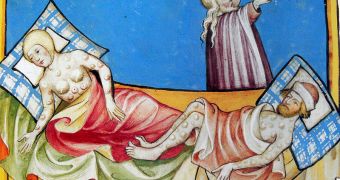Scientists are now able to tell the world what were the main factors that made plague responsible for so many deaths.
The fact that the disease killed so many people made researchers name it “black death”, but until recently, no authorized voice was able to state for a fact what exactly caused such a rapid, tremendous evolution.
Scientists found answers after they studied several medieval bodies from a London cemetery.
They analyzed in their laboratories plague germs and they were able to tell what made the bacteria responsible for the Black Death's expansion so powerful.
It seems that DNA of Yersinia pestis have reflected the fact that European from the 14th century didn't have an immune system strong enough to fight with the deadly germ.
"The Black Death was the first plague pandemic in human history. Humans were (immunologically) naive and not adapted to this,” declared Johannes Krause, scientist and a very respected professor at the University of Tuebingen, Germany.
His findings were published on Wednesday, in the British journal Nature.
Scientists established that, due to their inability to fight with the germ, people had no other way of protecting themselves against the much feared pathogen, that seemed to preserve shape and characteristics throughout its history of six centuries.
Its effects were devastating, since studies proved that no virus or other kind of disease managed to wipe off the face of the earth so many individuals.
The people who lived in the 14th century faced the deadliest epidemic humankind ever experienced.
Its evolution began in China. Afterwards, it started making millions of victims in Europe. From 1347 to 1351, Black Death killed one out of three European inhabitants, and 1 out of 12 people all across the globe.
Surprisingly, scientists found out that the medieval germ still has connections with plagues that researchers keep under control in the present.
Never the less, the modern ones can't compare, in terms of effects, with their far more devastating ancestor.
"Based on the reconstructed genome, we can say that the medieval plague is close to the root of all modern human pathogenic plague strains, “ concluded Krause.

 14 DAY TRIAL //
14 DAY TRIAL //